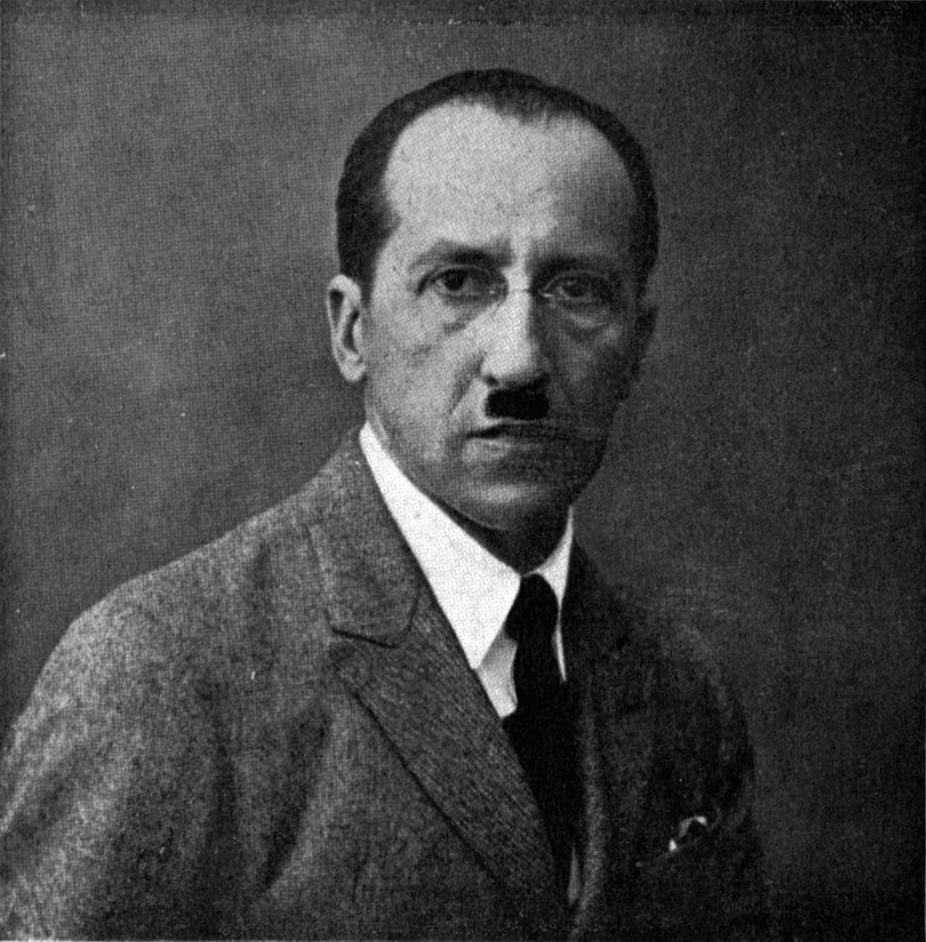“L'aspetto delle forme naturali si modifica mentre la realtà rimane costante.”
da Itinerario nell'arte vol. B – Zanichelli, Bologna, 2005, Giorgio Cricco e Francesco Paolo Di Teodoro
Pieter Cornelis Mondriaan, meglio conosciuto come Piet Mondrian , è stato un pittore olandese, fondatore assieme a Theo van Doesburg del "neoplasticismo" .
Nonostante siano molto famosi, anche se spesso imitati e banalizzati, i quadri di Mondrian dimostrano una complessità che smentisce la loro apparente semplicità. I quadri "non rappresentativi" per cui è conosciuto, che consistono in linee perpendicolari e campiture di colore geometriche in colori primari col bianco, il nero o il grigio, sono in effetti il risultato di una continua ricerca di equilibrio e perfezione formale evoluta stilisticamente nel corso di tutta la sua vita.
Wikipedia

“L'aspetto delle forme naturali si modifica mentre la realtà rimane costante.”
da Itinerario nell'arte vol. B – Zanichelli, Bologna, 2005, Giorgio Cricco e Francesco Paolo Di Teodoro
“The surface of things gives enjoyment, their interiority gives life.”
Written note in Mondrian's sketchbook around 1911; quoted in Abstract Painting, Michel Seuphor, Dell Publishing Co.,1964, p. 11
1910's
As quoted by the editors of 'The New Art – The New Life', op. cit. (Intro., note 1), p. 395, note 8
1920's
Origine: 1940's, A New Realism', 1943-1945, p. 18
Quote in Mondrian's letter to Israel Querido, Summer of 1909; published in the weekly magazine 'De Controleur' 23 Oct, 1909; as cited in English translation, in Two Mondrian sketchbooks 1912 - 1914, ed. Robert P. Welsh & J. M. Joosten, Amsterdam 1969 p. 10
1900's
Quote, 1919, as cited in Mondrian, -The Art of Destruction, Carel Blotkamp, Reaktion Books LTD. London 2001, p. 148
1910's
1910's, Natural Reality and Abstract Reality', 1919
Mondrian's reaction on a questionnaire (c. 1931?)
Quote of Mondrian, as cited in Mondrian, -The Art of Destruction, Carel Blotkamp, Reaktion Books LTD. London 2001, p. 166
1930's
1910's, Natural Reality and Abstract Reality', 1919
“You can so wonderfully be yourself here”
in Paris
Quote of Mondrian from his postcard to a Dutch girlfriend, Paris 1911 (written in his first week in Paris), by Mondrian's recent biographer Hans Janssen, of the Gemeentemuseum in The Hague; as cited by Alastair Sooke, in 'Mondrian - the Joy of Being Square'; BBC culture, 10 July 2017 http://www.bbc.com/culture/story/20170710-mondrian-the-joy-of-being-square
1910's
Quote in a letter of Mondrian to Sweeney, 24 May 1943; as cited in: - 102 - Two autobiographical texts (24 May 1943) http://mondrianwritings.nl/wp-content/uploads/2017/03/102.-Two-autobiographical-texts-24-May-1943.pdf
This idea was partly the reason of their mutual split in 1924; in 1929 they reconciled in Paris.
1940's
Quote of Mondrian before 1930; as cited in 'The New Art – The New Life', Piet Mondrian, op. cit. Introd. Note 1., 1931
1930's
1910's, Natural Reality and Abstract Reality', 1919
quote, 1937; last lines of Mondrian's publication in 'Circle'; as cited in Abstract Art, Anna Moszynska; Thames and Hudson, London 1990, p. 117
1930's
note in Mondrian's sketchbook II, 1912/13; as quoted in Two Mondrian sketchbooks 1912 - 1914, ed. Robert P. Welsh & J. M. Joosten, Amsterdam 1969 op. cit. (note 31), p. 61
1910's
like in Neo-Plasticism / De Stijl
Quote in Mondrian's letter to Lodewijk van Deyssel (who reacted as Dutch art critic on Mondrians essay: 'Le Néo-plasticisme'] Paris, February 1921; as cited in Mondrian, - The Art of Destruction, Carel Blotkamp, Reaktion Books LTD. London 2001, p. 136
1920's
Quote in his letter to Sweeney, 24 May 1943; as cited in Mondrian, - The Art of Destruction, Carel Blotkamp, Reaktion Books LTD. London 2001, p. 240
1940's
Origine: Later Quote of Mondrian, about 1910-1914; in 'Mondrian, Essays' ('Plastic art and pure plastic art', 1937 and his other essays, (1941-1943) by Piet Mondrian; Wittenborn-Schultz Inc., New York, 1945, p. 10; as cited in De Stijl 1917-1931 - The Dutch Contribution to Modern Art, by H.L.C. Jaffé http://www.dbnl.org/tekst/jaff001stij01_01/jaff001stij01_01.pdf; J.M. Meulenhoff, Amsterdam 1956, p. 42
Quote in: 'Plastic Art and Pure Plastic Art', Piet Mondrian (1937); in 'Documents of modern Art' ed. Robert Motherwell for Wittenborn, Schulz, New York 1945
1930's
Quote in Mondrian's letter to Cornelis Spoor, Domburg October 1910; Van Ginneken and Joosten, op. cit. (note 26), pp. 263; as cited in Mondrian, - The Art of Destruction, Carel Blotkamp, Reaktion Books LTD. London 2001, p. 47
1910's
quote about the growing controversy between Mondrian and Van Doesburg. concerning the use of diagonal lines
Origine: quote from a letter of Mondrian to Theo van Doesburg, undated, c. May 1918; as cited in Mondrian, -The Art of Destruction, Carel Blotkamp, Reaktion Books LTD. London 2001, p. 120
Quote in: 'Plastic Art and Pure Plastic Art', Piet Mondrian (1937); in 'Documents of modern Art' ed. Robert Motherwell for Wittenborn, Schulz, New York 1945
1930's
Quote in Mondrian's letter to Theo van Doesburg, 18 April 1919; as cited in Mondrian, - The Art of Destruction, Carel Blotkamp, Reaktion Books LTD. London 2001, pp. 125-6
1910's
1910's, Natural Reality and Abstract Reality', 1919
Quote in 'The New Art – The New Life', Piet Mondrian, op. cit. Introd. Note 1., 1931
1930's
Quote in: 'L'expression plastique nouvelle dans la peinture', Piet Mondriaan, 'Cahiers d'Art', 1, Paris, 1926, pp. 181-183
1920's
Quote from Mondrian's letter to Israel Querido, Summer of 1909; published in the weekly magazine 'De Controleur' 23 Oct, 1909; as cited in Mondrian, - The Art of Destruction, Carel Blotkamp, Reaktion Books LTD. London 2001, p. 36
1900's